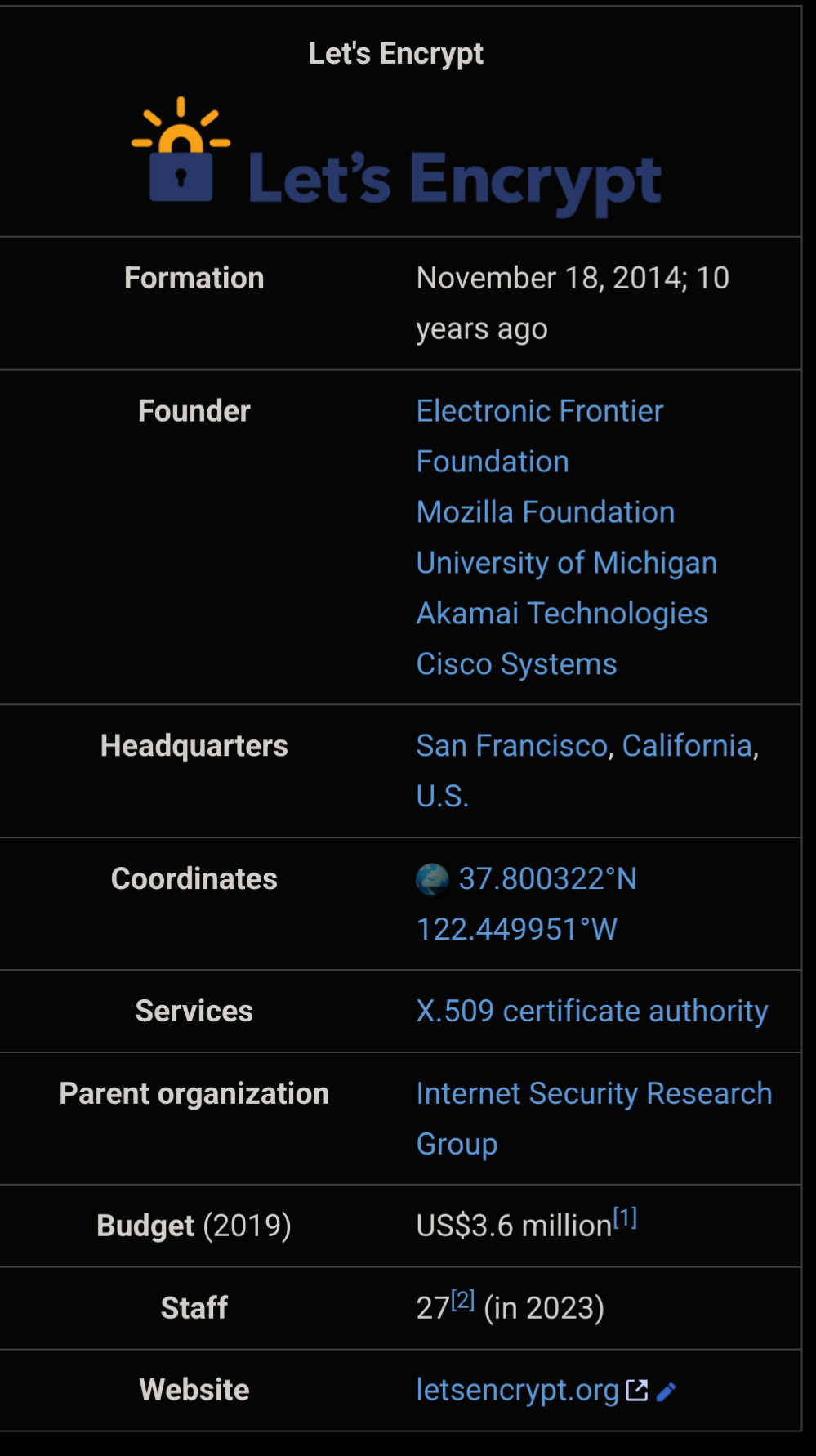this post was submitted on 18 Nov 2024
728 points (99.7% liked)
Technology
59448 readers
3609 users here now
This is a most excellent place for technology news and articles.
Our Rules
- Follow the lemmy.world rules.
- Only tech related content.
- Be excellent to each another!
- Mod approved content bots can post up to 10 articles per day.
- Threads asking for personal tech support may be deleted.
- Politics threads may be removed.
- No memes allowed as posts, OK to post as comments.
- Only approved bots from the list below, to ask if your bot can be added please contact us.
- Check for duplicates before posting, duplicates may be removed
Approved Bots
founded 1 year ago
MODERATORS
you are viewing a single comment's thread
view the rest of the comments
view the rest of the comments

They came up with the ACME protocol, so presumably somebody could. The real barrier to entry is the cost of getting into that certificate chain of trust. I have no idea why it's so difficult and expensive.
Well, it's difficult, as it should be, because if you control a certificate in the active chain of trust of browsers, you can hack pretty much anything you want.
Correct me if I'm wrong, but isn't the CA only signing your public key to prove identity/authority? I don't think the CA can magically MITM every cert they sign.
The impact is serious enough to warrant a $1m entry fee, IMO. At best, someone could impersonate a site. They'd also have to get other things in line (e.g. DNS hijacking) to be at all successful anyway. And it's not like most people are authenticating certs themselves. They just trust browsers to trust CAs that vouch for you and prevents those scary browser warnings.
It doesn't improve encryption compared to a self-signed cert though.
If you are the CA, you can sign a new certificate yourself for google.com and the browser will accept it. It's effectively allows MITM for any certificate. Worse, it's not even limited to certificates under that CA. The browser has no way of knowing there's 2 "valid" certs at once, and in fact that is allowed regardless (multiple servers with different instances of the SSL cert is a possibility).
Certificate pinning might save things, since that will force the same certificate as was previously used, but I'm not sure this is a common default.